My name is Salman Rameli, a 23 years old software developer from Surabaya, Indonesia. My interest in photography started when I was 6 years old, after my father bought a Canon PowerShot A200 to replace his Nikon F-501. Being a child, I did not know how to operate the contraption that the adults use to take photos. The mystery of photography also baffled me back then. How can you confidently know that you have captured the moment you wanted perfectly, if you could not see the result instantly? The Canon, being a digital camera, answered all of my questions. Even though it has small screen, at least I could see the picture I just taken in an instant. My younger self was satisfied. Throughout the years growing up, my interest in photography was slowly declining, due to the advancement in digital photography which made my Canon’s felt outdated (it was).
Tired hearing my complaints, and also wanting to have newer camera, my father bought me a new camera in 2010. It was a Sony Cyber-Shot DSC-W220. My interest in photography spiked again, which made me bring it daily to school to document silly things we did. I also love showing the pictures I have taken to my grandparents, especially my grandfather who also shared passion for photography back when he was younger. One day, after showing pictures I have taken since the last time I visited him with my parents, he went to the storeroom and brought out a big plastic bag. I looked inside and saw that it contained his various photography equipment in dilapidated condition – a Canon AE-1 which I have not previously seen him using it, various lenses for the Canon, an Olympus Trip Junior which I remembered that he always brought when we went for vacation, and a shabby black leather case that looked like it held a camera inside.
I took the content of the plastic bag one by one and carefully inspected them. The last item I took out was the mysterious leather case. It had an emblem that said “Yashica” with a symbol of atom beside the text. I have heard camera brands like Canon or Olympus, but not Yashica. I remove the case and laid my eyes on one of the most beautiful camera I have ever seen.
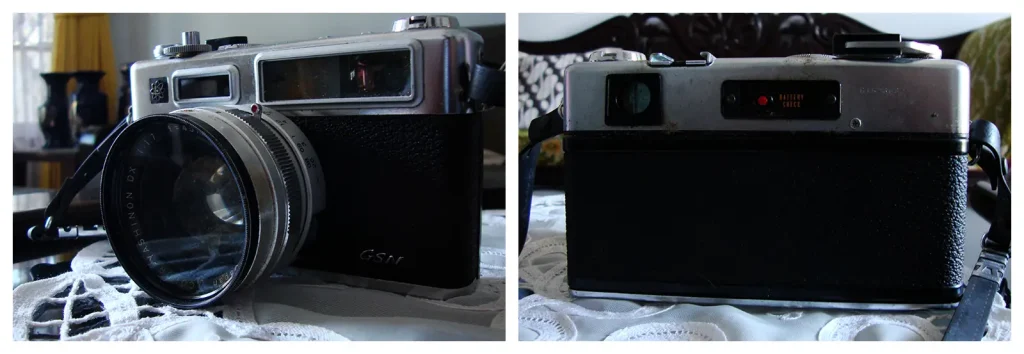
I instantly fell in love with its retro design. I knew that it certainly was not an SLR, nor a point-and-shoot, given various symbols on the lens, so it must be something else. Unfortunately, it also was in the worst condition compared with the others. The focusing mechanism was jammed, the viewfinder was clouded, the lens and the film chamber were covered in fungus. Nevertheless, it was my favourite of the bunch. When it was time to go back home, I put all of it back inside the plastic bag and gave it to my grandfather. He told me that he wanted to give it all to me, as he did not need them anymore. I thanked him and we went back home.
Fast forward to 2019
One day I found my sister browsing an Instagram account that sold various film cameras. She told me that she was interested in film photography and wanted to try it. I’d recently been paid for building application for a large company in Indonesia, I was flushed with cash and keen on spending my money to broaden my skills. I had learned about the rangefinder camera form factor, and wanted to try one. Thinking of killing two birds with one stone, I told my sister to find an affordable rangefinder film camera which I would pay for.
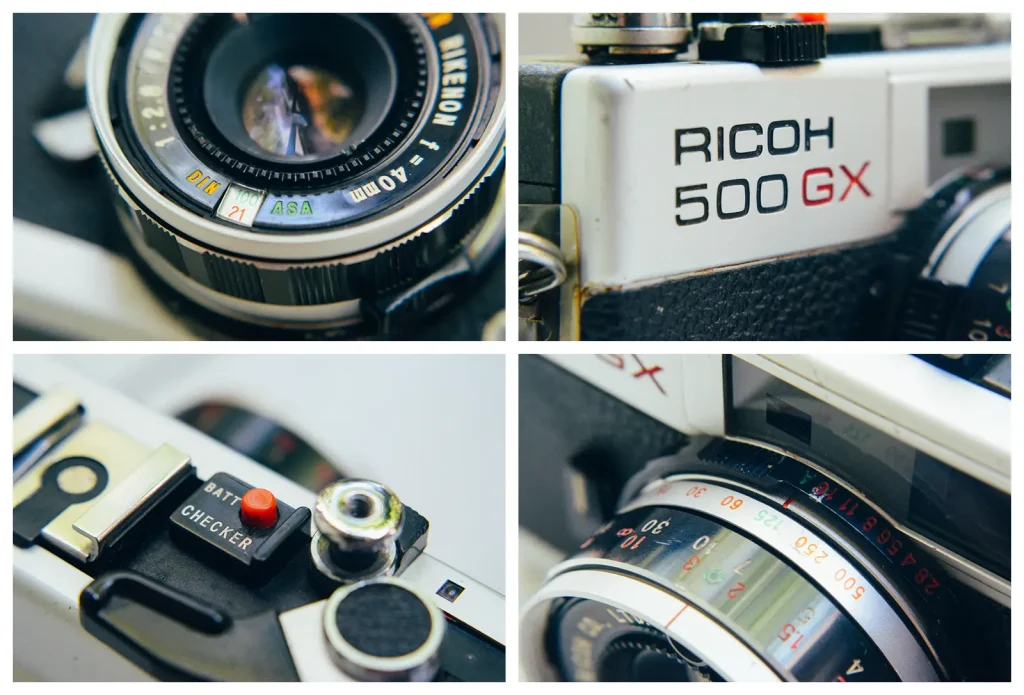
My first purchase in my journey to find the perfect rangefinder camera was a Ricoh 500GX. I am not going to write much about the camera as I did not enjoy using it. I am the kind of person who has sweaty palms, and the size of the camera made it slip easily out of my hands. Its viewfinder is cramped, with small focusing patch, which made focusing difficult.
The lens contained aperture, shutter speed, and focusing ring. The focusing ring took sizeable area on the lens and located furthest from camera body, which made it easy to identify. Next to it is the shutter speed ring. It has two grips on opposite side to made it easier to turn. Finally, located almost flush with the camera body is the aperture ring. It has the smallest size compared with the other two, and the hardest to rotate. If I wanted to change the aperture, I have to take the camera off my eyes, hold the camera with my left hand while my right hand tried to grip and rotate it to my desired value.
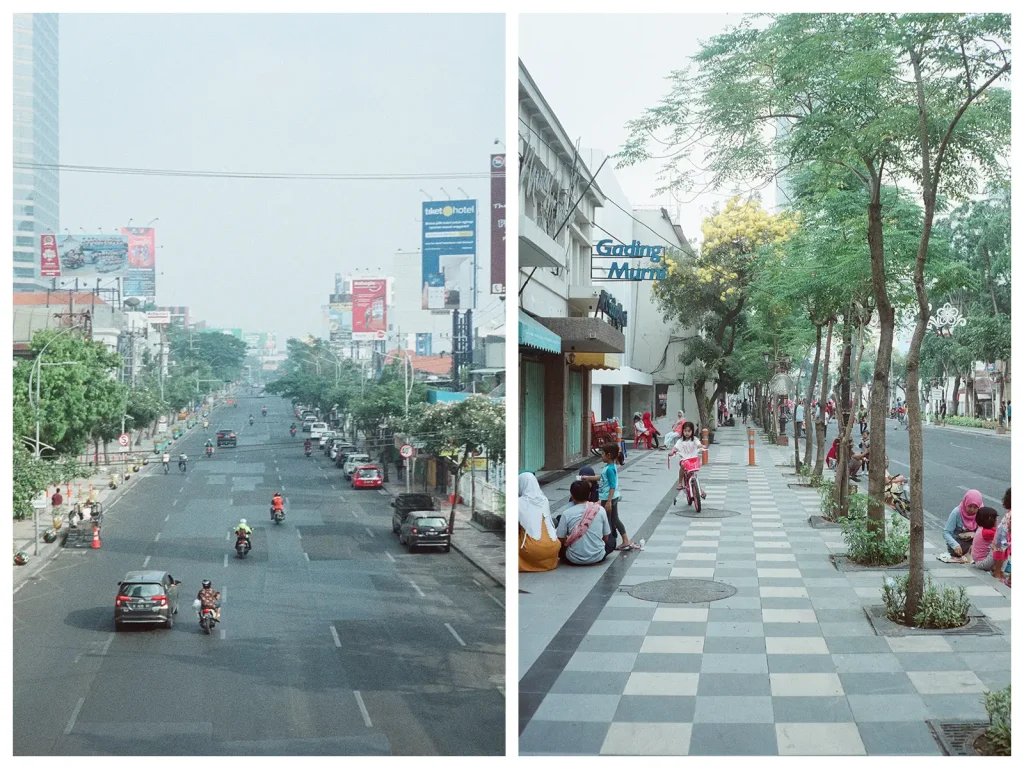

It was clear to me that the Ricoh 500GX is not the camera that I wanted, so I continued my search for another rangefinder camera that might suited me. Before purchasing the Ricoh, I already searched for secondhand Yashica Electro 35. What I found was that it still commanded high prices even after all these years, and the circulation was fast too. Even though I felt that I could not justified its high price, from time to time I still trawled online marketplace, hoping that maybe I can find an affordable one.
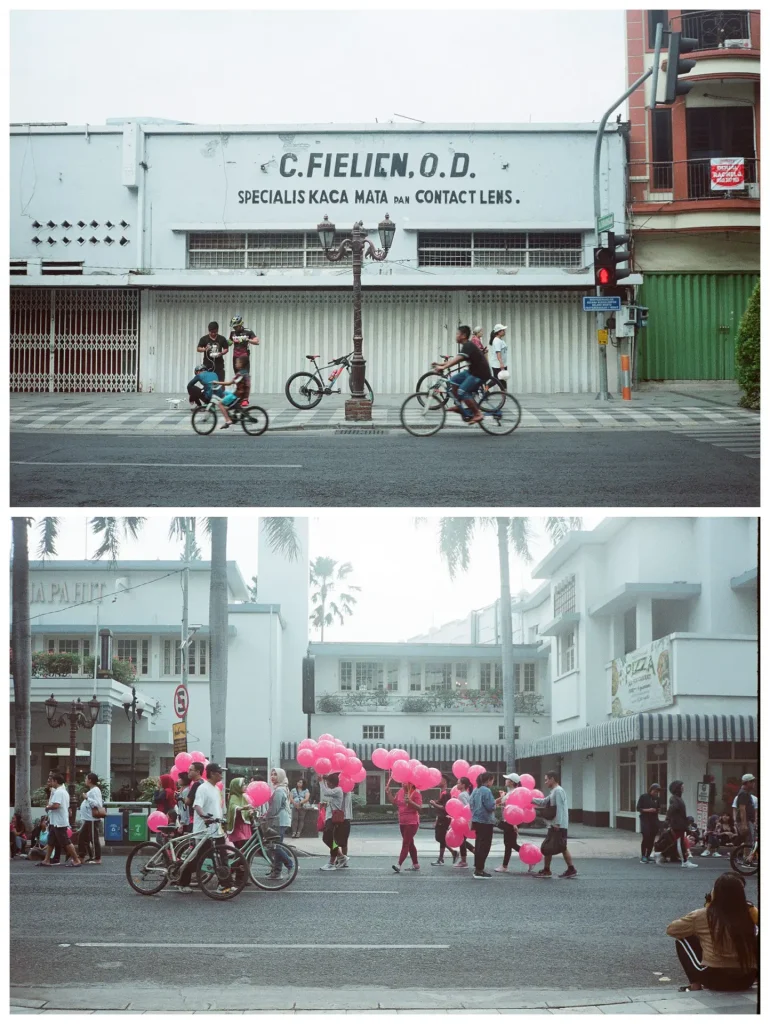
My search lasted for several weeks. In that time, I found several Yashica Electro 35s priced under one million Rupiah (my target price), but usually they had either cosmetic damage on the body or fungus on the surface of the lens. I already pondered to contact one of the sellers, but I still believed that out there still existed the one that I want.
That is until one day, I stumbled upon what I felt was the perfect Yashica Electro 35 for me. I accidentally found it after jumping from one seller to another in Tokopedia (one of many online marketplaces in Indonesia). The pictures in the listing showed how good the body was, the seller described that the camera was still fully functional, and it was sold with its original strap, lens cap, and the case. On top of that, the seller was also located in Surabaya, and was able to send using instant delivery service. Even though it was priced a bit above my threshold, I felt the price was justified because of the accessories that came with the camera. It was already late at night, so I bookmarked the listing and went to sleep.
Early next morning, I contacted the seller to ask whether the camera was still available or not, and if instant delivery is possible. In the afternoon, the seller finally replied to me and confirmed that it was for sale and they could send it with instant delivery service. I made the payment, and rushed back home to wait for the courier. Not two hours later, the package arrived. I quickly unboxed it, hoping that my purchase was not a dud.
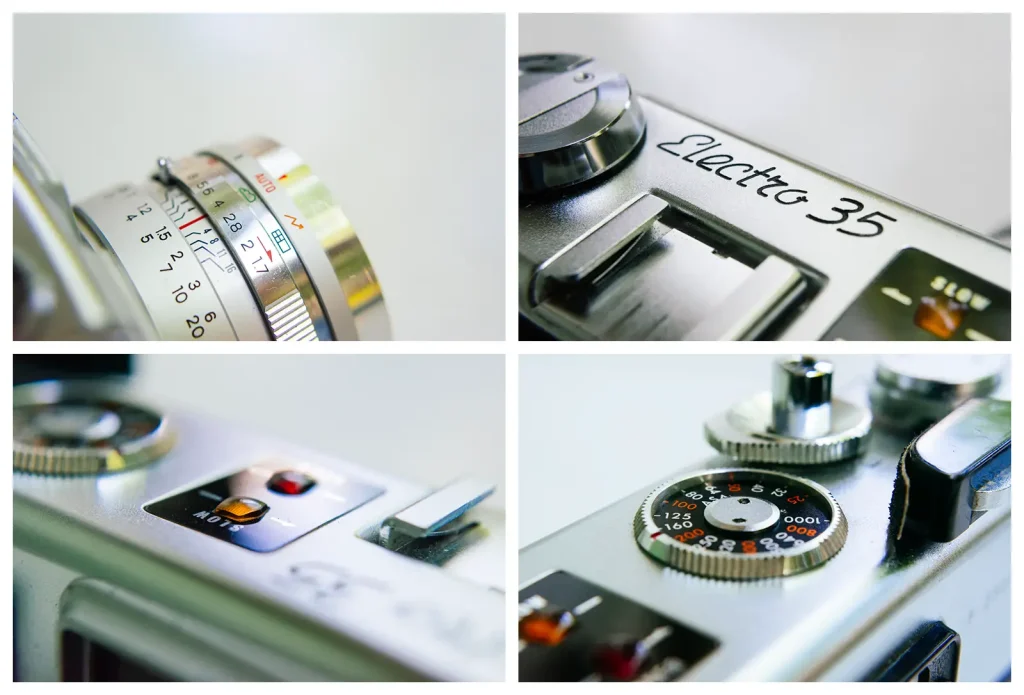
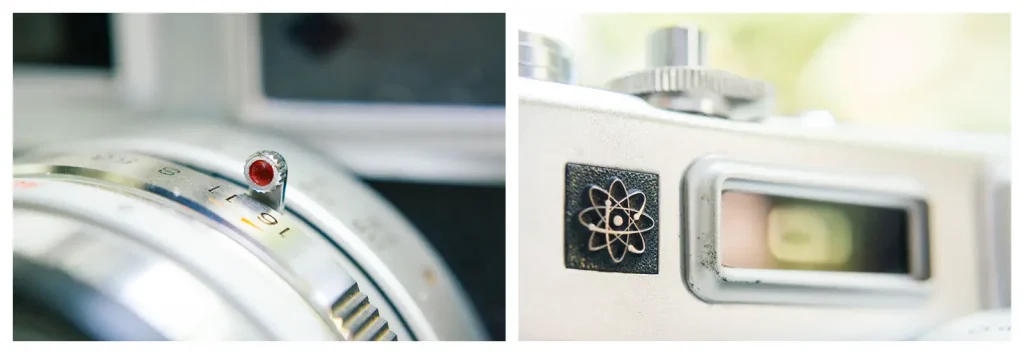
My worries were proven unfounded. The camera was in a very good condition, and it even came with a battery that was made compatible for the camera’s discontinued mercury battery. I found out that apparently the previous owner was a smoker, as the case reeked of cigarette smoke. The original strap was unusable as it has hardened over the years. I did not mind as I intended to use the strap from my grandfather’s Yashica instead. Over the next few days, I carefully cleaned the camera to get rid of grime that has accumulated over the years, and most importantly to get rid of the smell. I also loaded it with a roll of Kodak Ultramax 400 I had bought at Sunday market on previous weekend.
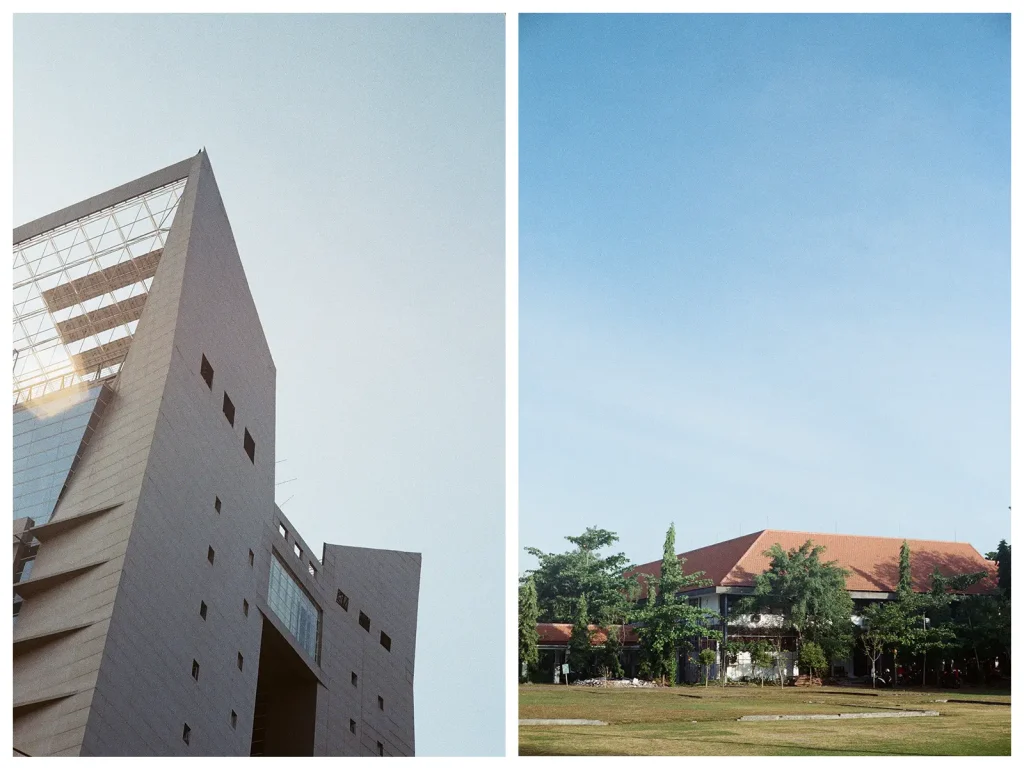
Using the camera, I found joy that I did not experienced when using the Ricoh. The size of the Yashica perfectly fit my hands. I did not have any difficulty turning the rings on the lens without taking my eyes off the viewfinder, unlike the Ricoh. The viewfinder was spacious, with big rangefinder patch to make focusing easier. It also has parallax compensation, which I felt was cool and unavailable on Ricoh 500GX. When shooting, I saw that the rewind knob sometimes did not turned as I crank the advanced lever. I was afraid that I did not load the film properly, so back at home I decided to open the back of the camera quickly to see whether the film was correctly loaded or not. Luckily I saw that the film was loaded properly, so all was well.
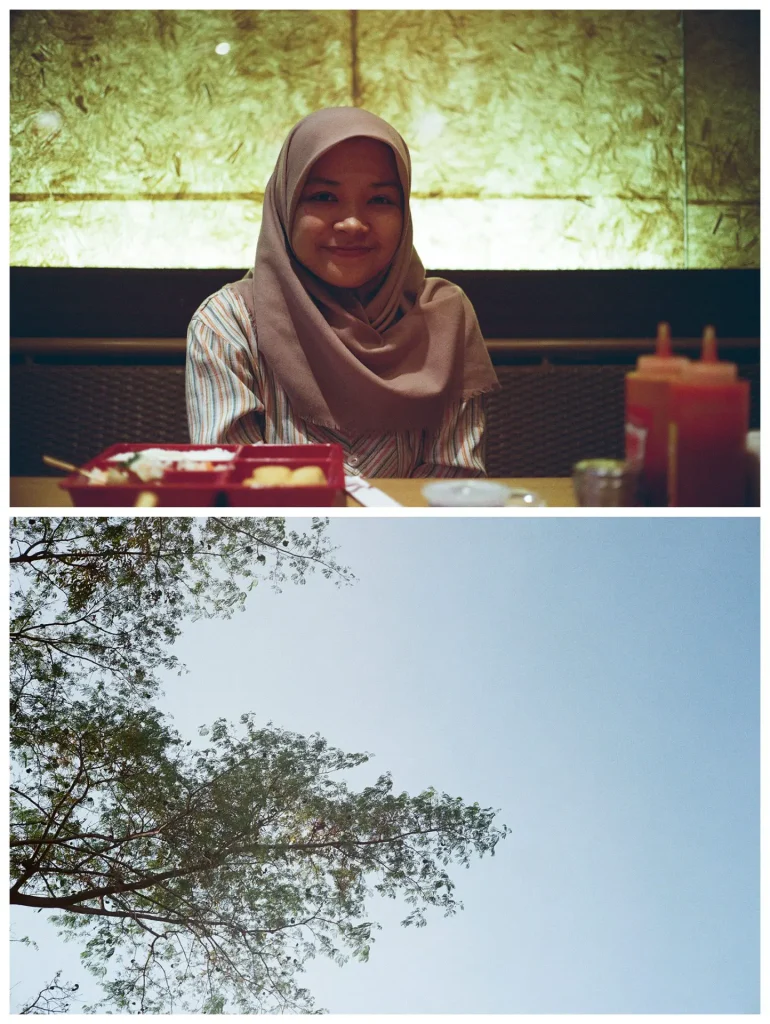
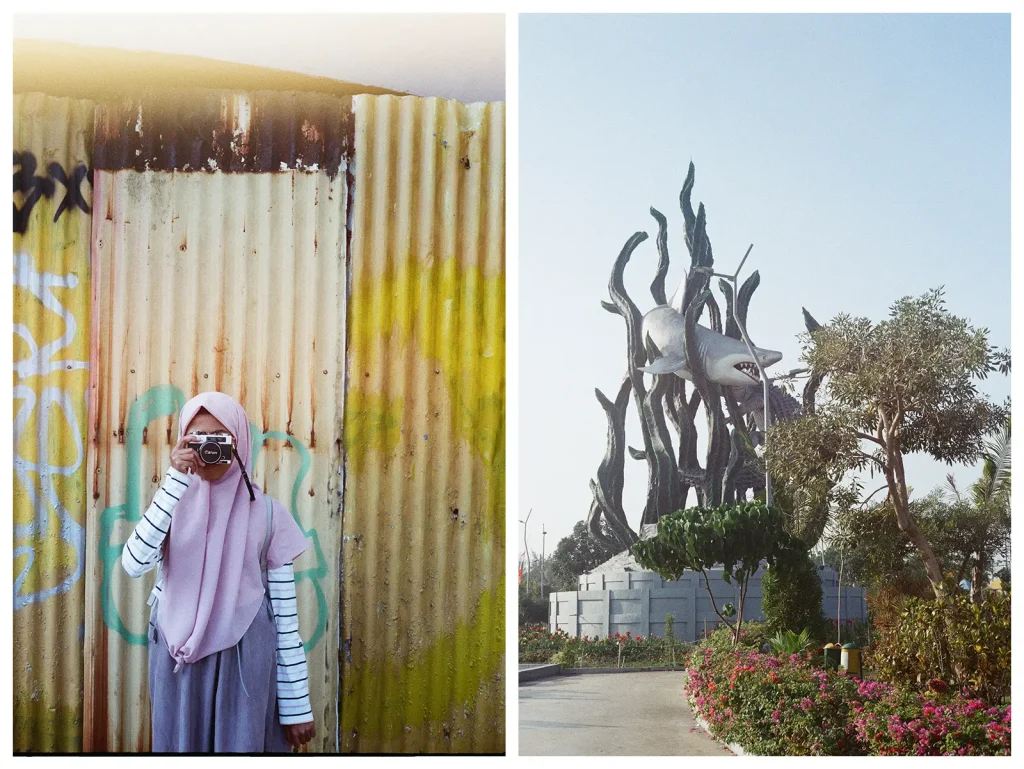
Seeing the result after finishing the roll, I was amazed. The lens rendered colors beautifully, and tact sharp even when near the maximum open aperture. The Yashinon lens was sharper at f/2 than the Ricoh’s Rikenon lens at f2.8.

As for the downsides of the camera? I really wish that Yashica did not limit the Electro 35 as aperture priority camera, or at least show me the shutter speed it chooses. There are also several features on Ricoh 500GX that I wish Yashica has, such as indicator to show if film is loaded inside the camera, and if the current film frame has been exposed or not. I also appreciate the short throw of Ricoh’s film advance lever. Several people have called it as abrupt, but I prefer it than the long one on Yashica.
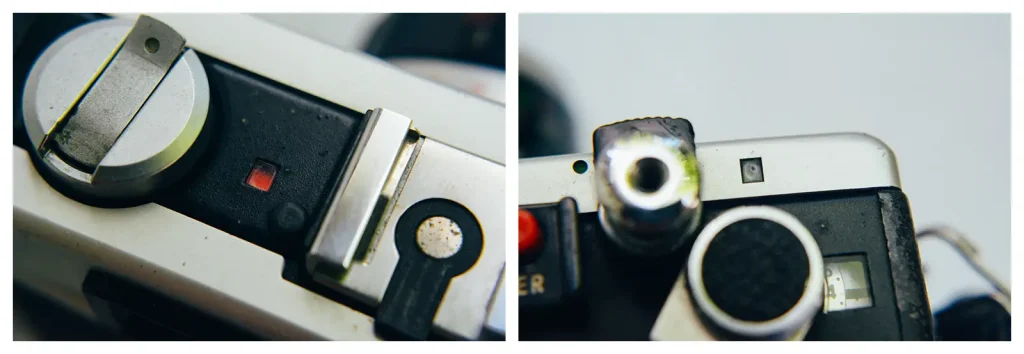
I know that judging a camera after only finishing one roll seems premature, but I do love this camera. Learning analog photography also helps me to fight my anxiety. I used to hate participating in public events, but now I always looking forward for weekend so I can go to car free day events that are hold in my city every Sunday. Now, I only have to change my way of thinking from avoiding taking pictures worrying if better situation comes later to just shoot and not having regret later.
My Instagram account: instagram.com/annoying_salman
My Github account: github.com/salmanrameli
Share this post:
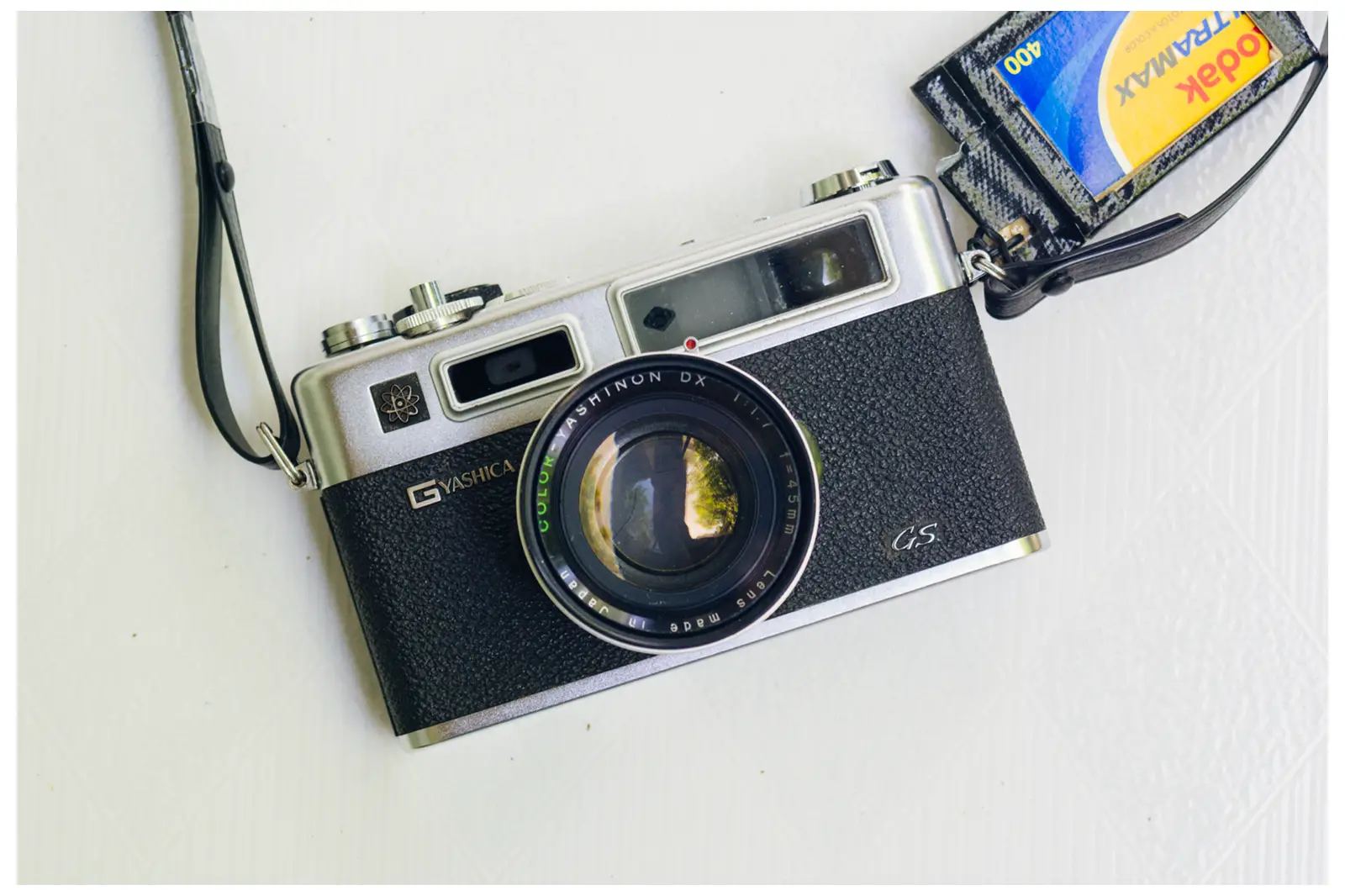








Comments
Eric Norris on Yashica Electro 35 GS – A Personal Journey to Find My Perfect Rangefinder Camera – By Salman Rameli
Comment posted: 25/10/2019
Thanks for posting this! The Electro 35 is a very nice camera that I enjoy shooting with as well. I think if you use a nicer film (like Ektar) you’ll get even nicer results.
Question: What happened to the Yashica your grandfather gave you?
Comment posted: 25/10/2019
Luke on Yashica Electro 35 GS – A Personal Journey to Find My Perfect Rangefinder Camera – By Salman Rameli
Comment posted: 25/10/2019
Comment posted: 25/10/2019
Sam on Yashica Electro 35 GS – A Personal Journey to Find My Perfect Rangefinder Camera – By Salman Rameli
Comment posted: 15/02/2020
As we were leaving, he said I could have the camera once he'd found all the original pieces to go with it! I can't wait to try it out, it will be my first go at film photography and I plan to do a project to show him that his camera is being used properly again which I'm sure he'll love.
This article has made me excited to receive it!
Comment posted: 15/02/2020
Shubroto Bhattacharjee on Yashica Electro 35 GS – A Personal Journey to Find My Perfect Rangefinder Camera – By Salman Rameli
Comment posted: 21/05/2020
I still have it; works perfectly, and is pristine. It was my only camera until 1983, when I plunged into Nikon SLRdom.
A couple of tips:
- At any given ASA, I’d rotate the aperture ring toward wide open till the red OVER lamp just lit. That marked a 1/500sec shutter speed. Then I’d turn the aperture ring the other way, counting ring-clicks for 1/250, 1/125, 1/60, 1/30, and so on, to the smallest aperture.
At 1/30 sec, the orange SLOW lamp would just light. So I had my unofficial shutter-speed indicators! ????
- Yashica used the electronics to hold the shutter open, at your chosen ASA and aperture, all the way to 30 full seconds, as dictated by the measured light-level. On removing the battery to cancel the hold-open capability, the shutter fired at its default mechanical speed of 1/500sec — perfect for flash shots! Those indicators for sunny, cloudy and indoors on the aperture ring were perfect for 400ASA film — 1/500sec at those apertures!
Happy shooting!
Comment posted: 21/05/2020
Comment posted: 21/05/2020
Alain Monnens on Yashica Electro 35 GS – A Personal Journey to Find My Perfect Rangefinder Camera – By Salman Rameli
Comment posted: 06/06/2020
Comment posted: 06/06/2020
5 Frames with Yashica Electro 35 GS & Kodak Gold 200 - By Salman Rameli - 35mmc on Yashica Electro 35 GS – A Personal Journey to Find My Perfect Rangefinder Camera – By Salman Rameli
Comment posted: 24/06/2020